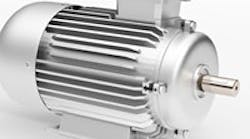Improving motor efficiency is the most common opportunity to save electricity. Several factors can decrease motor efficiency: poor maintenance and lubrication, misalignment, frequent starting and stopping, and improper sizing. Under-sized motors draw excessive current to do the work and eventually fail due to overheating. Generally, motors are correctly sized, but if change in loading conditions makes the motor under-sized, it needs to be replaced with suitable-sized unit. Over-sized motors can draw more current than required for the work, wasting energy. In such a case, reducing the motor speed with a variable frequency drive could lower the power draw to deliver the same work. For correctly sized motors, installing ammeters would help to ensure the motor is not overloaded continuously.
[pullquote]
Installing a variable frequency inverter on AC induction motor drives is the most common energy savings project to reduce electricity consumption, especially for plants operating a large number of centrifugal pumps and fans. In the normal plant design, most of these pumps and fans are coupled with discharge-side flow control valves to meet the exact process requirement. However, discharge-side valve or damper control is inefficient for fluid flow control. Varying the speed of the centrifugal pump or fan is much more efficient.
In addition to installing frequency inverters, a few other methods exist to achieve efficient flow control. If the electric motor is a slip-ring induction type, adjusting the slip resistance would vary the motor speed. If a suitable AC to DC converter is available, installing a DC motor with a rheostat could provide speed control capability. Eddy current drives also can provide speed control. In one case, we replaced the 3,520-rpm, 2-pole, 20-hp motor drive of the primary air fan for a coal burner with a 1,760-rpm, 4-pole, 10-hp motor that was readily available in the warehouse. With the 2-pole motor, the fan discharge side was 70% throttled; in contrast, with the 4-pole motor, the discharge side was throttled to about 20% and the power consumption for the primary air fan dropped by 6kW. For all partially loaded or variable flow process drives, retrofitting a speed controller could save substantial electrical energy. Installing suitable speed controllers on cooling-tower water pumps, process water pumps, chilled water pumps, and boiler combustion air fans also could save electricity.
Thermal imagers easily can identify overheated electric motors. They also can be used to inspect fuses, circuit breakers, switchgears, transformers and electrical panels. Identifying an overheated location that’s normally not visible until it becomes red hot or broken after melting would help prevent the problem well in advance and also would save energy by reducing wasteful heating. However, carefully analyze the thermal images of overheated motors for a suitable remedy because excessive friction due to bad bearings also can cause overheating.
While looking for electricity-saving opportunities, many people focus only on “hard-wired” loads — i.e., ones permanently connected to the electrical system that can be disconnected only after de-energizing a section of the electrical system — because they are the major electricity users.
However, you also may save significant electricity by turning off idle “plugged-in” loads. These electrical loads plug in easily with minimal exposure to live electrical parts. Plug-in loads are typically the portable devices that can be moved between locations, such as personal computers, copiers, fans, heaters, lamps and many small electrical gadgets. Plug-in loads waste energy when left on, especially during non-working hours. Some of these loads are DC devices that have transformers and rectifiers to convert AC into DC at a lower voltage. It’s very common to find during an electrical audit that these plug-in loads are either operating when they are not needed or wasting some energy when they are inactive. Connected, unused plug-in loads not only waste energy but also generate heat and reduce the equipment’s life. Conducting periodic audits on plug-in loads can help reduce monthly electricity bills.
VEN V. VENKATESAN is Chemical Processing's Energy Columnist. You can e-mail him at [email protected]



